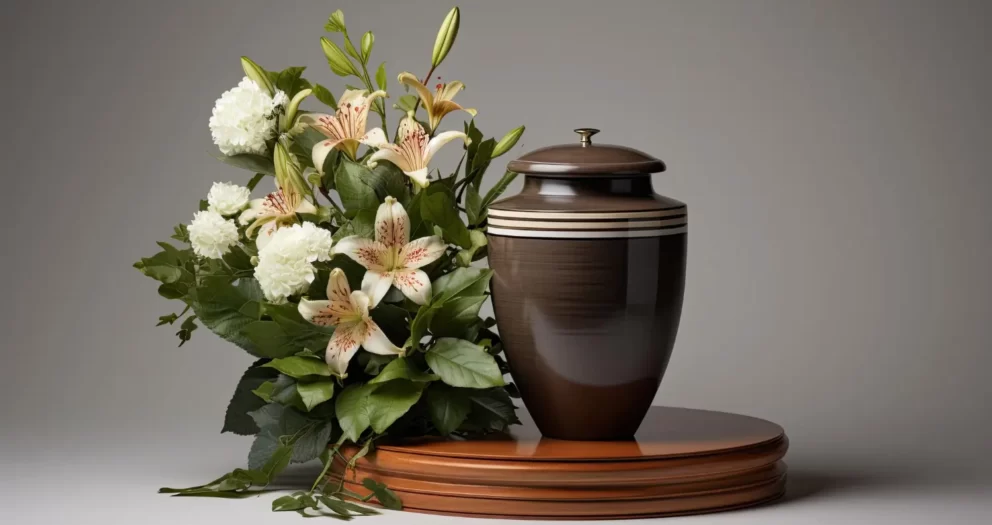The financial demands associated with end-of-life services can be overwhelming, particularly when you’re already grappling with emotional distress. With traditional funerals averaging around $8,000 in costs, it becomes essential to look for ways to save without compromising on the dignity and respect of the service. Here are several methods to consider:
Choosing Cremation is often significantly less expensive than a traditional burial, so it has become an increasingly popular choice for many families.
- Direct Cremation: This is the most economical option, which involves cremating the body immediately after death without a viewing or service. You can then opt to have a memorial later or scatter the ashes in a meaningful place.
- Rental Caskets: If you wish to have a viewing or service before cremation, consider renting a casket rather than buying one.
- Alternative Urns: While funeral homes offer a range of urns, you might find more affordable options online or even use a meaningful container you already have at home.
Comparison Shopping It’s essential to get quotes and service details from multiple funeral homes to ensure you’re getting the best value. Remember, under the Funeral Rule, all funeral homes must provide itemized price lists upon request.
Pre-Planning By planning ahead, you can lock in current prices for future services, potentially saving you money in the long run. Pre-planning also alleviates the decision-making burden from grieving family members.
Limit Memorial Services If opting for cremation, consider a more minor, more intimate memorial service or even a celebration of life at a family member’s home or a community center. This eliminates the costs of larger funeral home spaces.
Purchase Urns or Caskets Online You can often find a wider variety of urns, caskets, and other funeral goods online at competitive prices. Make sure to read reviews and ensure the vendor is reputable.
Government or Charitable Assistance Certain organizations, charities, and government programs might offer financial aid or services at reduced rates for cremation, especially for individuals who meet specific criteria or have no life insurance.
Crowdfunding While traditionally not the first option, crowdfunding platforms like GoFundMe can be a way for friends and family to contribute to cremation and memorial service costs.
Opt for Package Deals Some funeral homes offer cremation packages that bundle several services for a reduced total cost. Review these packages carefully to ensure they fit your needs and don’t include unnecessary services.
Add Ashes to an Existing Family Grave Many cemeteries have now adapted their policies to accommodate the changing preferences of families. If your family already owns a grave plot, you might be allowed to add the ashes of a loved one to the same plot. Here’s why this option is advantageous:
- Cost-Effective: Since the plot is already purchased, you won’t need to buy a new one. There might be a nominal fee for the burial of the urn, but it’s typically much less than purchasing a new plot.
- Keeping Loved Ones Together: This option allows family members to be laid to rest together, maintaining a sense of unity and closeness even in death.
- Flexibility in Capacity: Some cemeteries allow the addition of up to two urns in a single grave plot. This provides flexibility for families wanting to inter another member’s ashes in the future.
- Preservation of Land: Using an existing plot for multiple interments conserves land, aligning with the values of many who choose cremation for its lower environmental impact.
When considering this option, ensure to check the specific policies of the cemetery in question. Some might require the use of an urn vault or have specific regulations about how the urn is placed. It’s always a good idea to communicate your wishes clearly and understand any associated fees or requirements.
Donate Your Body to Science This is a noble option allowing for scientific and medical advancement while eliminating the immediate need for burial or cremation costs. Medical institutions, universities, and research centers may offer body donation programs. After completing studies, the institution usually cremates the remains and returns them to the family, often at no cost. Ensure you and your family are well-informed about the process and any potential waiting times.
Final Thoughts: The key is to strike a balance between paying respects to your loved one and managing financial constraints. Open communication with family members, thorough research, and taking advantage of available resources can help navigate this challenging time more affordably.






Write a comment
Your email address will not be published. All fields are required